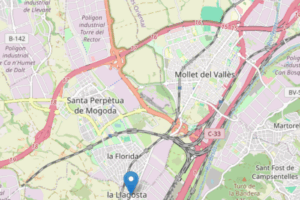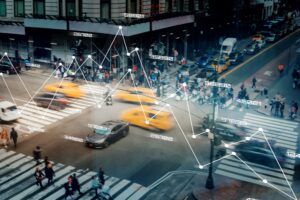
IRIS: A platform to assess, detect and respond to vulnerabilities and threats in ICT networks
March 18, 2022
Predictive eBoost’s project aims to improve the performance of electric vehicles’ powertrain and batteries
April 21, 2022The project Biomedical photonics and machine learning for the diagnosis and treatment of ocular disorders, cognitive deterioration and haematological diseases (BIOPHOCH), led by the Centre for Sensors, Instruments and Systems Development (CD6), is designed to develop new tools and methodologies for image analysis and processing of data in the health area using photonic techniques.
Biomedical photonics is leading to revolutionary discoveries in the health sector, where light-based instruments are already used for non-invasive diagnoses and treatments of patients. These advances are accompanied by the generation of a large quantity of data. It is in this area that BIOPHOCH has the mission of obtaining efficient algorithms that could process the information that is gathered.
What are the challenges of the BIOPHOCH project?
The project uses eye-tracking technology, spectral and confocal microscopy, among others, along with data analysis and machine learning algorithms to research and address the challenges in three medical areas:
- The diagnosis of ocular disorders using new methods of refraction and evaluation of the eye fundus.
- The objective evaluation of cognitive state (Alzheimer’s and persistent COVID) from the analysis of ocular movements.
- The diagnosis of haematological diseases through spectral confocal microscopy.
Through machine learning, the aim is to offer the capacity to classify and identify data patterns, with similar reliability to that of experienced doctors.

Continuity project with a multidisciplinary team
BIOPHOCH brings together in one project a highly complementary team comprised of physicists, optical engineers, software engineers and optometrists from the CD6 and various hospitals, including the Institute of Ocular Microsurgery (IMO), Terrassa Health Consortium (CST) and Sant Joan de Déu Hospital (HSJD). It is also supported by companies in the medical sector.
As part of the State R+D+I Programme Oriented to the Challenges of Society of the Ministry of Science and Innovation, BIOPHOCH has a budget of 242,000 euros and lasts 3 years (September 2021 to August 2024).
Technology
Sector
You want to know more?
Related Projects
- The Centre of Technological Innovation in Power Electronics and Drives (CITCEA) of the Universitat Politècnica de Catalunya - BarcelonaTech (UPC) is leading a European project that redesigns the current energy system to stabilise the power grid in the face of high renewable energy penetration. The proposed solutions involve using the loads that consume energy to help balance the grid.
- A team from the Environment Centre Laboratory (LCMA) of the Universitat Politècnica de Catalunya - BarcelonaTech (UPC) is taking part in a study commissioned by the city councils of la Llagosta, Mollet and Santa Perpètua (in Vallès Occidental), with the main objective of identifying the impact of industrial plants on the generation of unpleasant odours and continuously monitoring air quality in these municipalities.
- Researchers from the Concrete Sustainability and Smart Structures (C3S) research group, part of the Construction Engineering (EC) group at the Universitat Politècnica de Catalunya - BarcelonaTech (UPC), are leading the CIRC-BOOST project, which aims to promote sustainability, industrial competitiveness and greater resource efficiency in the European construction sector.
- A research team involving the Barcelona Innovative Transportation (BIT), inLab FIB, CARNET Barcelona – Future Mobility Research Hub (CER-AMA), and the Department of Computer Architecture (DAC) of the Universitat Politècnica de Catalunya - BarcelonaTech (UPC) is driving the i-MovE project, which aims to incorporate multisectoral data to provide much more accurate and valuable information for the mobility sector. The project develops four use cases focused on both companies and mobility authorities, covering public and individual transport, using the UPCxels demonstrator.




